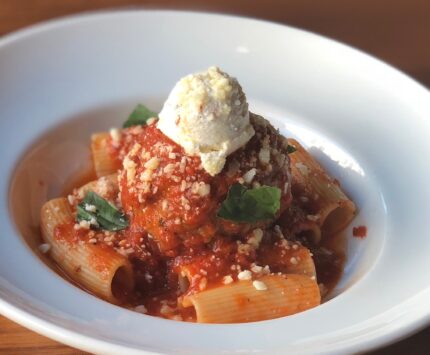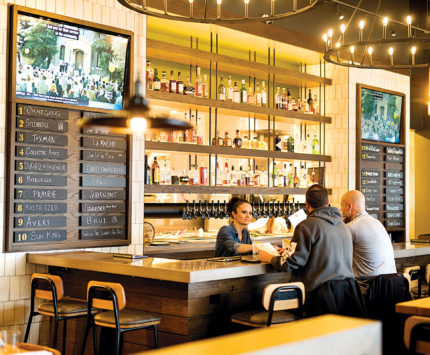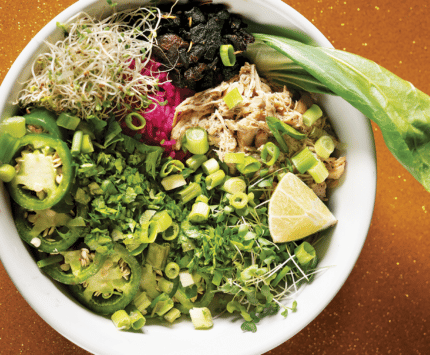Beatriz Vasquez Embodies The Art Of Fashion

You rock accessories, Beatriz!
I love beaded, handmade necklaces from Oaxaca, Mexico. The symbolism of flowers is ingrained in Mexican tradition. I often have flowers in my hair to remind me of my culture.
What else connects you to your heritage?
Every time I go to Mexico, I always try to shop for beautiful indigenous Mexican skirts. I want to incorporate the fashions of the communities where my parents come from.
Your fashion heroes?
Frida Kahlo, Zendaya, Priyanka Chopra. I admire women who honor their culture and are so stylish at the same time.
Do you follow trends?
Trends come and go, right? People know you for your style. My daughter says, “You dress so crazy, but everything looks so good.” I say, “This is just me, honey.”
How do you make a fashion statement?
I love heels—big chunky heels. Every single time I walk into a place, people look at me like, “Oh s—, who’s this girl?” Because I’m dressed so eclectic, you know? Sometimes I have braids, sometimes I have an asymmetrical hairstyle. My style is so eclectic, I have to admit.
Let’s talk about your art. What is papel picado?
It’s a very ancient art form created by indigenous Mexican communities. It’s literally tissue paper hand-cut to create beautiful intricate designs, all with chisels, nails, and hammers. Then they put them over rope or line, hundreds of them, and put them on the Mexican plazas from one building to the next, covering the entire plaza with papel picado. This ancient craft is actually a dying art form, but there are a lot of wonderful families deep in Mexico who are still creating it in the traditional form. That’s the reason I say I’m inspired to create papel picado. My work is contemporary papel picado–inspired artwork because I’m not Mexican, I’m not American, I’m both. I cannot take that stunning craft and call it my own. I cut with an X-ACTO knife by hand to honor the indigenous communities who continue to make it. This has helped me to find my own identity. I create from my cultural memory, from my memories of my childhood living on the border, from my images of my parents’ lives growing up as migrants, my father being a migrant worker here in Indiana, my grandparents. Plus injustices that continue to plague Latino and Latinx people in the United States.
You mentioned that papel picado is a dying art form. Why?
Papel picado is a dying art because consumerism has taken over. Go to any Mexican store and you will see papel picado hanging in their shops, but these huge manufacturers have taken that stunning craft and mass produced it out of plastic, which is not sustainable. It doesn’t dissolve like papel picado—once you put the paper version on the lines outdoors in the plazas, the environment gets rid of it in time. It’s really a beautiful thing because it’s saying we’re here for just a moment. We’re all going to dissipate like papel picado, we’re all going to die someday. And because Mexico honors death as a part of life, we try not to be afraid of death. We honor it. That’s why papel picado is a big part of Dia de los Muertos.
How do you even start trying to grasp the technique for an art form so intricate?
I graduated from Herron [IUPUI’s Herron School of Art & Design] in 2006, but I didn’t learn it at Herron. I had to learn all about Mexican artists through my own research. I found myself looking for identity, not wanting to create what everyone else was. I wanted something that identified with me. I went through painting, ceramics, woodworking, but didn’t make the connection until I went to the border to meet with my uncles and aunts. The day prior to leaving Mexico, I went shopping at the markets, looked up, and saw papel picado. I thought, Oh my god, it’s always been part of me. I never saw it as a form of art, saw it as just a craft. It’s not something you see in museums, but it’s beautiful. Why didn’t I see the beauty and intricacy of it before?
Anything you can tell me about your new collection of wearable paper art?
My latest collection involves sculptural techniques with heavyweight Canson and colorful tissue paper swirls.
Where can we see your work right now?
I am currently exhibiting at the Indiana State Museum’s Collecting Indiana exhibit, the Kurt Vonnegut Museum & Library’s Immigrant Experience, and the Children’s Museum, where I am hosting a Wearable Art workshop as one of the 2022–23 Visiting Artists.
How do fashion, art, and social justice intersect?
It’s huge. My way of expressing myself is a form of resistance, going against the grain of colonization and the expectations that have been placed on me since I was a little girl. And art is so connected to the treatment of Latinos in communities all over the world. My art is soaked in meaning. I call myself an “artivist,” both an artist and an activist. Everything’s an act of resistance.
With one glance at your Instagram feed, it’s obvious that your Mexican-American heritage, your art, and your fashion all align to tell a story. What story are you hoping to tell?
Individuality. Cultural pride. Belonging and self-acceptance. Being proud of where you come from, your roots. I always talk in my art about healing, generational traumas. I speak about how my image is first and foremost within my art. If you look at my Instagram, you see a lot of photos of me. I take so much pride in who I am as a woman coming from a traumatic past—we were not rich at all, we were very poor, underrepresented all the time. I still feel like I’m underrepresented. No matter what culture you come from, self-awareness doesn’t follow the expectations of society. A lot of my mother’s friends are my age or younger. They tell my mom, “She doesn’t look like a mom.” I say, “What, traditionally?” Exactly what is that supposed to mean? I just don’t understand that. Honor yourself however you want to. We’re all artwork. You decorate yourself and your body from head to toe however you want. You are your own canvas. A lot of Mexican women will say, “Why is she wearing those clothes?” Because I want to!
You call yourself a Chicana artist. What does that mean, exactly?
A Chicana is a person of Mexican descent that was born in the U.S. I’m not fully Mexican, but I also feel like I’m not fully American. I was born on the border with all the richness of Mexican traditions—food, fashion, beauty—but also with the beauty of American style and Chicana style. Saying you’re a Chicana is also a form of resistance because of the Chicana movement, which I learned while spending time in California. It has to do a lot with the identity of Mexican-Americans and the notion that we’re not from there, we’re not from here. But now we’re starting to say we belong in both worlds.
As a child of Mexican immigrants, what do you wish Hoosiers knew or understood about Mexico or the life of a Chicana artist?
What I would like for Hoosiers to try to understand about Mexican people and Mexican-Americans and Latinos all around is that we’re thriving here in the Midwest and everywhere in the U.S. This has been my home for 30 years. We’re not going anywhere. There’s so much beauty in our culture, traditions, food, language, mannerisms, fashion. Accept us for who we are and understand that we have contributed so much to the fabric of the U.S. We were here well before Europeans. Our lands were taken away, yet we continue to be here. It’s about acceptance, full acceptance, and seeing us with different eyes. That’s one thing I’m always hoping for: to work with communities that finally accept us for being here and for bringing the beauty and richness of our culture.
Any exciting plans for the future?
I am looking forward to visiting Lesotho next year as part of the U.S. Art in Embassies’ Artist Exchange.








